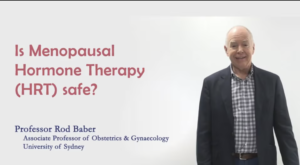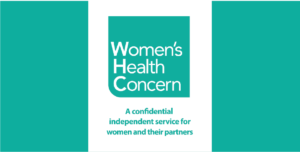Menopausal hormone therapy (MHT) is the most effective treatment for treating the symptoms of menopause. It usually involves supplementation with oestrogen and may also include progesterone and testosterone.
Oestrogen is an important hormone with its receptors found in many parts of the body including the brain, bone, skin, heart and vagina. Oestrogen can be delivered by a patch or gel through the skin or by an oral tablet. The best route of administration depends on your medical history and your preference and should be part of your assessment with a health professional.
Progesterone is a hormone we produce naturally which helps regulate the menstrual cycle. In women who have a uterus, progesterone must be added to oestrogen in MHT.
This helps stabilise and protect the uterus from over stimulation by oestrogen. Progestogen can be delivered by capsule, tablet or by a Mirena (an intrauterine device containing progestogen). For women who no longer have a uterus (such as women having undergone a hysterectomy), progestogen supplementation is not required in MHT.
Testosterone is often considered a “male” hormone but women produce around four times more testosterone than oestrogen. Testosterone levels begin to drop in perimenopause. As part of MHT, we may supplement your testosterone in addition to oestrogen. This may help with mood, energy, concentration and libido. However we do not currently have scientific studies to prove benefit.
While testosterone can be prescribed to women, it is not currently approved in New Zealand. Testagel is a gel preparation that may be rubbed into the skin and is funded and approved for use in men in New Zealand. Testagel may be used for women, but in smaller doses. It does require monitoring and is an unapproved medicine for women in New Zealand.
Risks and benefits of menopausal hormone therapy
Menopausal symptoms can have a significant negative impact on your life – not just on you but those you share your life with.
The right type and dose of MHT can be very effective in relieving these symptoms and the associated distress they may cause.
In most people, MHT is safe and effective. There are small risks associated with its use. These risks may vary depending on age and medical history, and it is vital that decisions are made based on your individual circumstances and jointly with your healthcare professional.
Taking MHT reduces your risk of osteoporosis and of developing cardiovascular (heart) disease.
MHT is a safe treatment for most women when started before the age of 60 or within 10 years of the last menstrual period.
The main risks associated with MHT use are a small increased risk of breast cancer and an increase risk of developing a blood clot or VTE (venous thromboembolism).
Mounting evidence suggests body-identical hormones and administration of MHT via the skin (transdermally) are safest.
This resource illustrates the risks and benefits of MHT in easy to understand, graphic form:
For an individualised risk and benefit calculator see these links from Wellspring:
For a comprehensive summary of risks and benefits and an explanation of the changing attitudes to MHT historically, see this resource from Women’s Health Concern:



